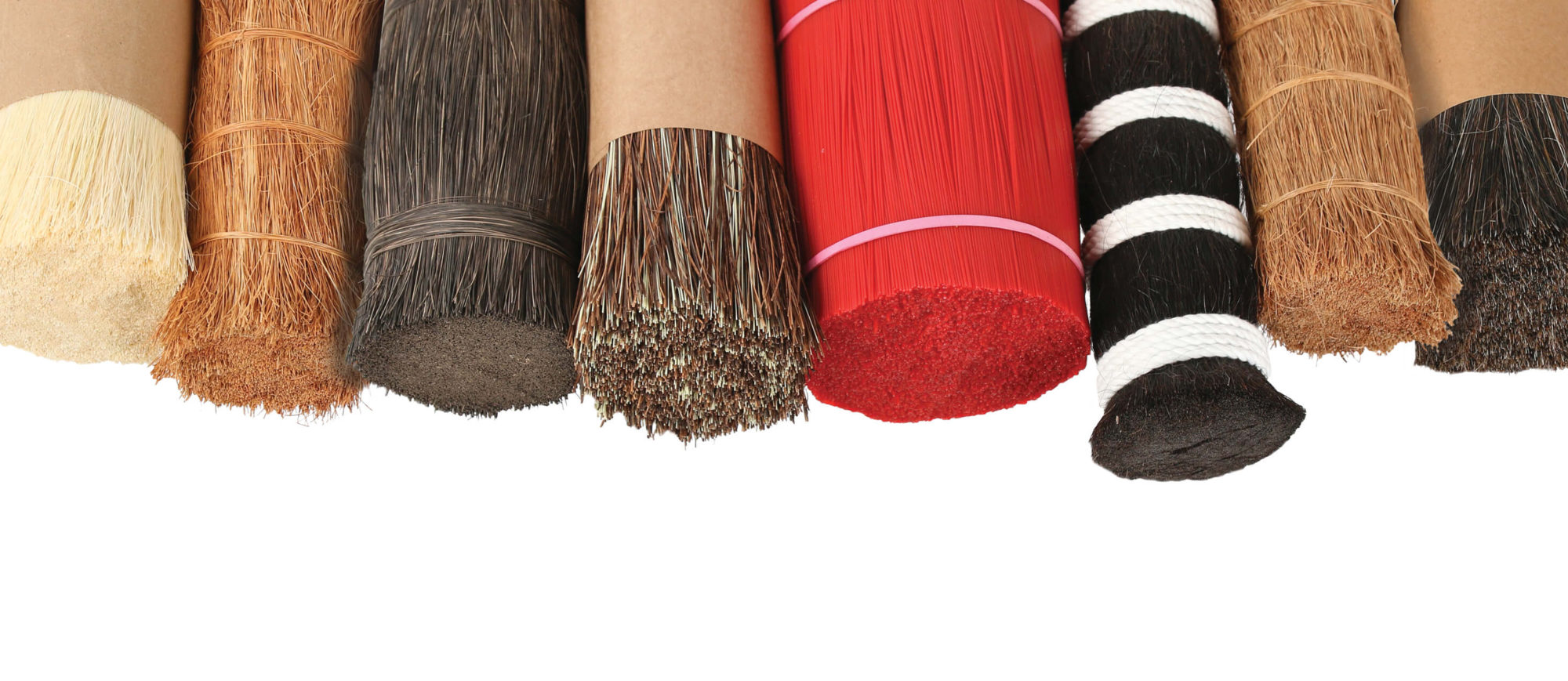PET – PVC – PP – PA6
There are available synthetic broom filaments as: PET, PP, PA6 and PVC in various colours and diameters. There are a few examples displayed above. We use these fibres in our own production of brush mixtures mostly. And we supply brush producers with various filaments as well.
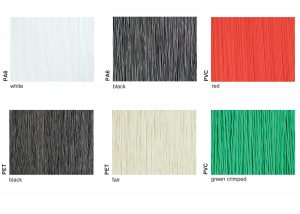
Polyethylene fibre for car wash facilities XLP
PE granulate is mass-dyed in various coloured shades. The mechanical properties of this fibre make it suitable for sectors in which brush fibres have to be soft and delicate in order to avoid damaging vulnerable surfaces. PE is available in round or XLP-profile cross-section and is delivered on rolls wrapped in paper or foil in various lengths of up to 1200mm, unflaggable, flaggable, preflagged one or two ends. Fibre with an XLP-profile cross-section, flagged on both sides, is designed for the production of brushes used in car wash facilities.
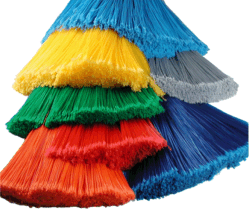
Properties of polyethylene fibre:
material: low density PE (polyethylene)
colours: yellow, blue, green, red, orange, grey, white, black
length: 80, 90, 120 cm
section: XLP „+” section
dimension: 1,0 mm
finishing: unflaggable, flaggable, preflagged one or two ends, UV stabilized.
Upon request, special custom versions can be made up both in terms of fiber-characteristics, preparation and packing.
Abrasive filament
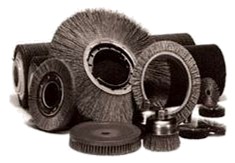
Abrasive filaments are produced by extruding 100% PA 6.12 (polyamide) with silicon carbide SiC or aluminium oxide AO grit interspersed throughout each filament. The special properties of PA 6.12 give its strength, stiffness (even when wet), fatigue resistance, durability, chemical resistance, and high melting point. Silicon carbide grit SiC is harder and sharper than aluminium oxide AO and is preferred for finishing ferrous metals. Aluminium oxide grit AO is less likely to fracture and is preferred for finishing soft metals.
PA 6.12 and abrasive grit combined into filaments for fabrication into brushes and brush tools. This abrasive filament is unique because the sharp cutting edges of the grit are randomly positioned in every direction and can be held firmly against any work surface, no matter what its shape. As the brush moves against the work surface, the cutting edges of the grit make contact because the flexible filaments bend at all angles to fit the contours of the piece being worked. Other configurations such as abrasive pads, belts, and wheels do not have this flexibility.
Major areas of application:
deburring and smoothing the edges of moulded, cast and /turned/milled/drilled tool parts made from metal or plastic,
sanding, removing rust, polishing and surface-structuring of metal sheets,
structuring and sanding of wood as well as pieces of furniture (this includes the sanding of parts between the application of coats of varnish), surface roughening and smoothing,
surface preparation, deburring and polishing of electrical circuit boards,
floor care: scouring extremely dirty floors, scrubbing and cleaning of even irregular floor areas such as terrazzo, brick, stone, concrete and wood – also included is the cleaning of all hard floor surfaces,
treatment of textiles, including silk, and a wide range of other cleaning, polishing and other applications where surface treatment is involved.
Polypropylene fibre
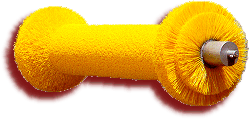
Polypropylene fibre (PP) has good resistance to heat, its low specific weight and excellent workability, make it the most versatile of all the filaments used in the technical- industrial sectors. Specific additives and stabilizers improve the elastic memory and resistance to UV radiation, while significantly reducing its flammability.
size (mm): 1,50 x 1,80, 1,50 x 2,40, 2,00 x 3,00, colour: green, blue, yellow, red, finish: crimped
Upon request, special custom versions can be made up both in terms of fiber-characteristics, preparation and packing.
Physical properties:
density [g/cm3] 0,90 -0,915, tensile module [Mpa] 1300 – 1600, stiffness [%, PET=100%] 45 – 60, elongation [%] 8 – 18, bend recovery (F), distortion temperature [ºC] 95, absorption of H2O at 23ºC [%] <0,2, combustibility [test 1,6mm] UL94 HB, UV stability (G), resustance to abrasion (E), softening point temperature [ºC] 140
Resistance to chemicals:
hot water (G), lubricating oils (E), diluted acids (E), ketones (E), concentrated acids (E), 5% hydrogen p. H2O2 (E), diluted alkalis (E), 30% hydrogen p. H2O2 (E), diluted alkalis (E), 30% hydrogen p. H2O2 (E), petroleum distillates (F), salt (E), alkohol, vegetable oils (E), trichloroethylene (G-F)
Legend: E – excellent; G – good; F – fair; P – poor.
The information on this technical sheet is based on producer laboratory tests, but we cannot guarantee the accuracy or the performances of all items under different conditions.
